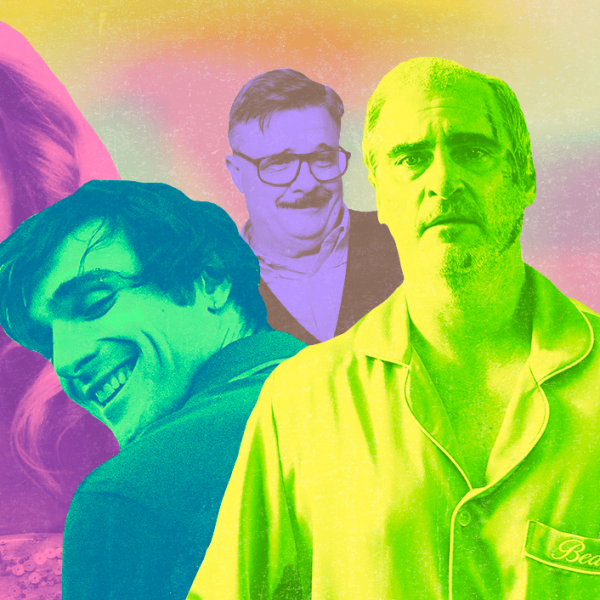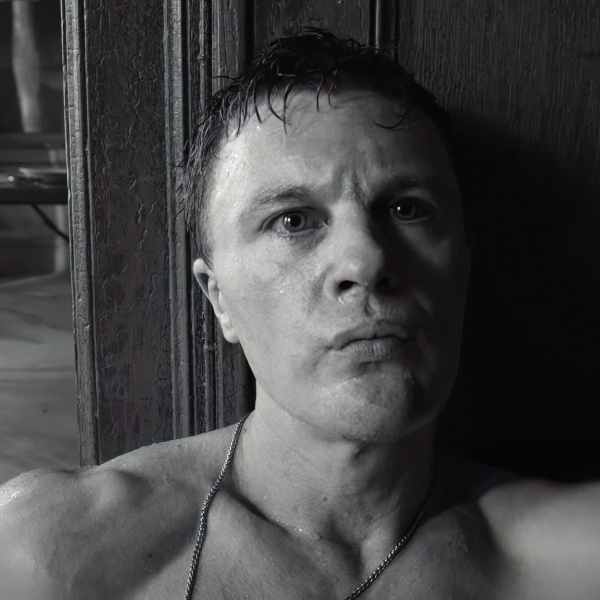And Nine More Things We Learned About ‘Shame’ From New York Film Festival Screening

It’s no surprise considering how spectacularly good his feature debut “Hunger” was, but Steve McQueen‘s “Shame” has marched through Venice, Telluride and Toronto, winning more and more fans along the way. And while there’s a few months yet to come, we’re almost certain that it’ll appear high up on a number of year-end lists of Playlist staffers come the end of 2011. Reteaming the British director with his “Hunger” star Michael Fassbender, along with “An Education” Oscar-nominee Carey Mulligan, it’s an immaculately made, firmly controlled, no-holds-barred look at the life of a lonely thirtysomething who seeks solace in a string of anonymous sexual encounters.
After its festival triumphs so far, it screened a few days ago at the New York Film Festival, an appropriate bow for a film that’s one of the best Big Apple movies in a long while. The Playlist were there for the post-screening Q&A with McQueen and Fassbender, where the helmer and star gave more than a few insights into their movie. Check out the 10 highlights after the jump. (Spoilers may follow.)

1. McQueen had no plans on making another film after “Hunger,” but a meeting with co-writer Abi Morgan (“The Hour”) sparked up the fire again.
Despite the acclaim for his debut, McQueen (who was an award-winning artist before he turned to the film world) was reluctant to follow it up. “After ‘Hunger,’ ” the director said, “I had no desire to make another film, because it was such an exhausting experience. After that, the fatigue of all the research was affecting me, and I had no desire to go through that sort of thing again.” But, having had the germ of the idea that led to “Shame”, a meeting with Morgan caught his interest. “We arranged to meet in a cafe, it ended up being a three and a half hour conversation, and we were still talking… this meeting with Abi, that’s when it started to happen again, the desire… the whole idea of storytelling.”
2. The film was originally set in London, but McQueen and Morgan couldn’t find addicts willing to talk about their experience, whereas New Yorkers were more willing to open up.
Considering it’s backed by British companies with a British writer and director, the choice to set the film in NYC might seem like a slightly perverse one. As it turns out, McQueen originally wanted to set it in the U.K,, the director revealing “We started off in London, I didn’t want to come to New York to make a film, that wasn’t my desire, my desire was to make a film about this particular subject matter.” But it hit a snag during the research phase: perhaps due to classic British repression, no sex addicts were willing to talk to McQueen and Morgan. “No one wanted to talk to us, no one wanted to have that particular conversation with us. It wasn’t resistance, it’s just that people didn’t want to talk.”
Instead, the team turned to more therapy-happy New Yorkers, who were more willing to open up, and the Big Apple became a more natural home. “I asked to speak to a specialist in the field, the two specialists we spoke to happened to be in New York. And that’s how we got access to people who had that affliction, sexual addiction… in New York, we had access to people who wanted to talk… And from there, it snowballed; ok, New York, let’s make a film here.”
3. McQueen is aware that the ‘addiction drama’ is a well-worn one, but believed that the unique nature of sex addiction helps set “Shame” apart.
From Billy Wilder‘s “The Lost Weekend” and Otto Preminger‘s “The Man with the Golden Arm” (both films cited by McQueen as inspirations for his movie) to more recent fare like “Leaving Las Vegas,” movies have never been shy of examining the mind of the addict. But there’s something unique about Brandon’s affliction that the director believed made it a particularly potent source of drama; namely, the direct interaction with others and their potential to be hurt. The director said, “What attracted me about this particular addiction was to do with, in order to facilitate this addiction, you need another person. Therefore, you have the drama in an nutshell. That hadn’t been looked at.”
4. Michael Fassbender has always been looking for a long-running ‘De Niro/Scorsese’-type relationship with a director, and thinks he’s found it in McQueen.
The Irish-German actor’s career got a big boost from “Hunger,” leading to work with Quentin Tarantino, Steven Soderbergh and David Cronenberg, as well as the lead in blockbuster “X-Men: First Class.” And he’s not likely to forget that debt, saying “I said to Steve at the end of ‘Hunger,’ ‘You changed my life.’ Literally, definitely, in terms of a professional point of view. I was getting to the point, I was 30 years old, the recession was just around the corner, which meant as in any other industry, less jobs for less actors, and for someone to take a chance on an unknown actor, and to take the risk to play a lead in the film, there was less and less of that happening.”
Fassbender had always hoped for a lengthy collaboration with a single director, and reteaming with McQueen seems to have delivered that for him. “When I was seventeen and I started off doing this,” he said, “my dream was to meet a director, and to have a relationship with a director, like Scorsese/De Niro, Lumet/Pacino. That would be the ultimate, to have a collaboration like that, and to be on a wavelength that powerful with somebody, and that’s what I was so lucky to find with Steve with ‘Hunger.’ ” Addressing his director, he said of their latest film. “You mentioned it to me in 2008, that you had this idea, and I was like ‘Fine, just tell me when and where.’ I didn’t even need to see a script.”
5. Fassbender had to take an indirect approach to getting insights out of the people he talked to in the course of his research.
“I just went out and had a lot of sex. Just tried to embrace it as best I could,” Fassbender joked when asked about how he prepared for the role of Brandon. But joking aside, conversations with sufferers provided the most help, although observing the way they talked was more useful than their anecdotes. On his research, the actor said “Asking people direct questions didn’t really work that well, but I always try to get people to tell stories. When people tell stories, they sometimes let their guard down. And you get little notes, little motivations, where you can see what the essence of a personality is, and that was very helpful in terms of getting into that headspace, a character who can’t really deal with intimacy, who doesn’t really like themselves at all, and sets about abusing themselves.”
6. Rehearsal and workshopping was helpful, but only up to a point, with Fassbender making sure he didn’t spend too much time with co-star Carey Mulligan, to help maintain the estranged nature of their sibling relationship.
With trust already established, Fassbender and McQueen maintained a collaborative back-and-forth, and Carey Mulligan was welcomed into the process. “We sat down, the three of us,” Fassbender recalls, “and talked about where these people are coming from, where they are in their lives when we meet them in the film, what’s happened before. A biography is always an important thing to do anyway. We discussed a lot of that, how far we wanted to go with it, a little bit of workshopping with the scenes.”
But given the nature of the relationship between Brandon and Cissy, Fassbender maintained a certain distance to his co-star before shooting, saying “I didn’t want to spend too much time with Carey, I wanted to keep that element of awkwardness, I don’t know how to describe it, a certain element of tension, of unsurety. Steve felt the same, we did a couple of workshops and then it was like ‘that’s enough.’ “
7. The relationship between Fassbender and Mulligan’s characters is a complex one, and McQueen was keen not to provide any easy answers, happy to let the audience fill in the gaps.
Some reviewers have pointed to a possibly incestuous chemistry between Brandon and Cissy, others have vehemently opposed the idea, and it sounds like that’s exactly what McQueen was after. “They’re of the opposite sex, obviously, and their background comes into play, with their intimacy, and the tension,” the director said. But he was non-committal on the exact nature of the relationship, saying “It’s one of those things that’s in the air, but you can’t really put your finger on it. It’s like a wet piece of soap, constantly moving, constantly adjusting. It’s there but it’s not there. The history presents itself in the present, in different guises, and that’s what I wanted to achieve.”
Indeed, the divergent reactions for the film seem to be a by-product of McQueen deliberately leaving the space for interpretation, the helmer commenting “When people come to the cinema and sit down, they’re bringing all their baggage, their history, their past, and they’re looking at people and projecting what could have happened to Cissy and Brandon.”
8. The sky-scraping nature of both Brandon’s home and office was no accident; it’s a reflection of the character’s place in the world.
McQueen has been coming to New York since 1977, but retains an outsider’s perspective on the city, and noticed one particular thing about the world that people like Brandon inhabit. “What was interesting to me is that a lot of people from Manhattan live and work in the sky, and as someone from Europe that’s kind of odd. It’s like that idea that he’s above it all, it’s a perspective on it all.” What’s more, the architecture of the high-rise buildings in which the film take place is neatly linked to its protagonist’s emotional state, the director saying that “You can always have a relationship with not just the participant in the film, but also the surroundings. Working with the reflections, and that kind of space, because the spaces are very geometrical, glass, steel, white wall, very cold in a way.”
9. Like its predecessor, “Shame” contains a number of lengthy one-take scenes, but it’s not showy: McQueen simply wants to let the scenes play out.
Undoubtedly the most striking scene in “Shame” came in the 20-minute unbroken take capturing a conversation between Fassbender’s Bobby Sands and a priest (Liam Cunningham). McQueen continues the trend here, but it’s always done in order to let the drama play out as honestly as possible. Of one key scene, the director commented “When Brandon and Marianne attempt to make love, the reason I wanted to have that filmed in one take is because I wanted to see Brandon making the attempt to make love, to connect with another human being physically, to really try. And that had to be played out in one take, to see him try, the effort, the failure, the unfortunate breakdown.”
Meanwhile, the lengthy tracking shot of Brandon driving through the city of night was shot guerilla-style, leading to some surprises, with Fassbender revealing “We didn’t close down any of those streets,” causing his director to jokingly panic “Don’t tell them that, though.” The star enjoyed the spontaneity, saying “It’s fun when it’s like that.”
10. Despite the shocking subject matter, McQueen maintains that it’s a film about trying to connect with other people.
It remains to be seen if audiences will be able to reach past the occasionally chilly demeanor and sometimes explicit nature of “Shame,” but as far as the director’s concerned, it’s a deeply human story: “the whole film is about tenderness, about communicating in an emotional way, about human contact where you can feel real, and alive. It’s like the homeless guy on the street, if you ignore him, he’s not alive. But if you give him contact, he realizes he’s alive. Contact, communication.”
And McQueen believed that, for such a tender film, he had the best possible actors he could have had, saying ” I feel that most great male actors are very feminine, and female actors are very masculine, and it’s the same thing with Carey and Michael, [they have] some kind of tenderness.”
“Shame” begins its roll-out, thanks to Fox Searchlight, on December 2nd.
Photo credits: FilmLinc, Zimbio





